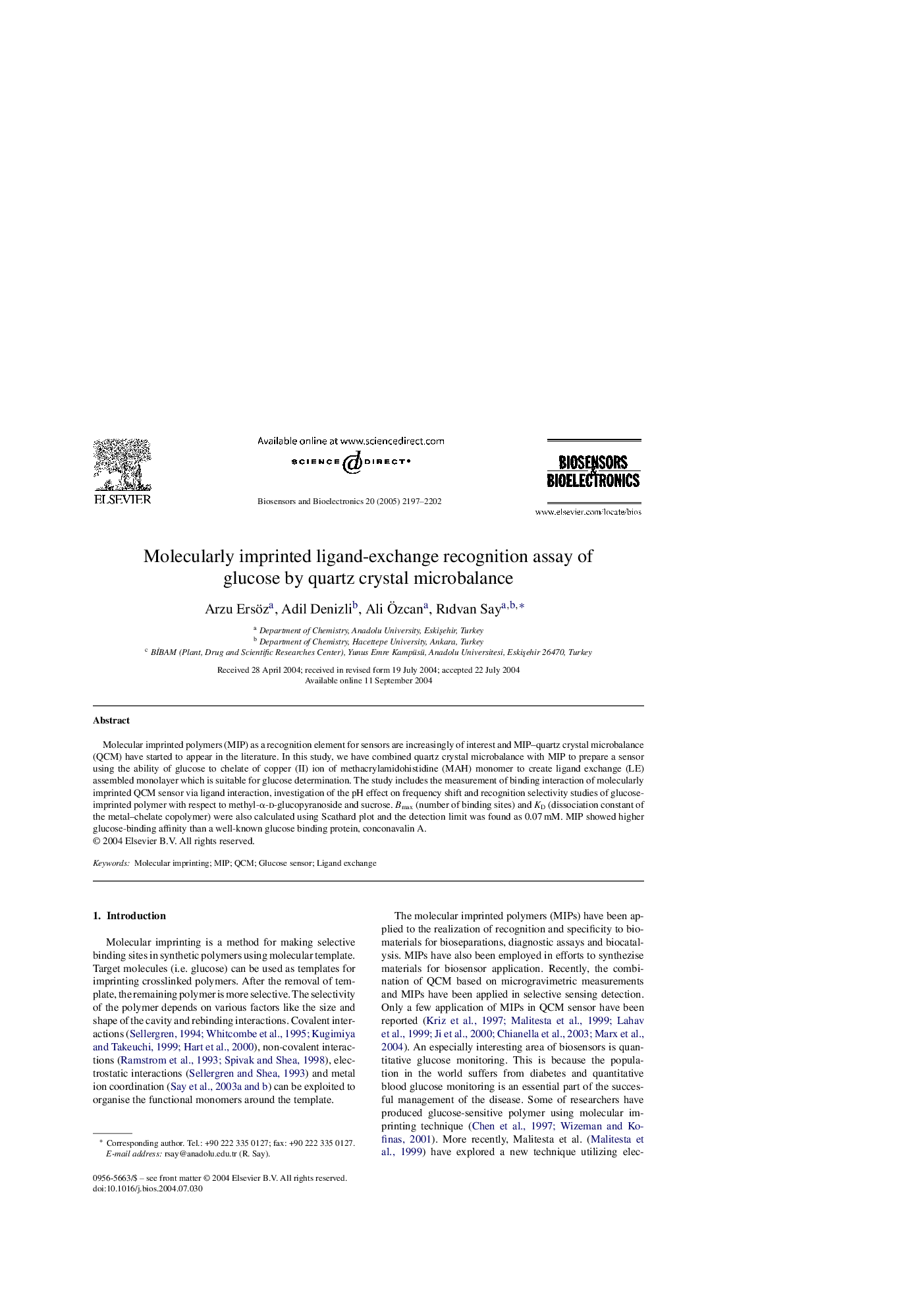| Article ID | Journal | Published Year | Pages | File Type |
|---|---|---|---|---|
| 870245 | Biosensors and Bioelectronics | 2005 | 6 Pages |
Molecular imprinted polymers (MIP) as a recognition element for sensors are increasingly of interest and MIP–quartz crystal microbalance (QCM) have started to appear in the literature. In this study, we have combined quartz crystal microbalance with MIP to prepare a sensor using the ability of glucose to chelate of copper (II) ion of methacrylamidohistidine (MAH) monomer to create ligand exchange (LE) assembled monolayer which is suitable for glucose determination. The study includes the measurement of binding interaction of molecularly imprinted QCM sensor via ligand interaction, investigation of the pH effect on frequency shift and recognition selectivity studies of glucose-imprinted polymer with respect to methyl-α-d-glucopyranoside and sucrose. Bmax (number of binding sites) and KD (dissociation constant of the metal–chelate copolymer) were also calculated using Scathard plot and the detection limit was found as 0.07 mM. MIP showed higher glucose-binding affinity than a well-known glucose binding protein, conconavalin A.
